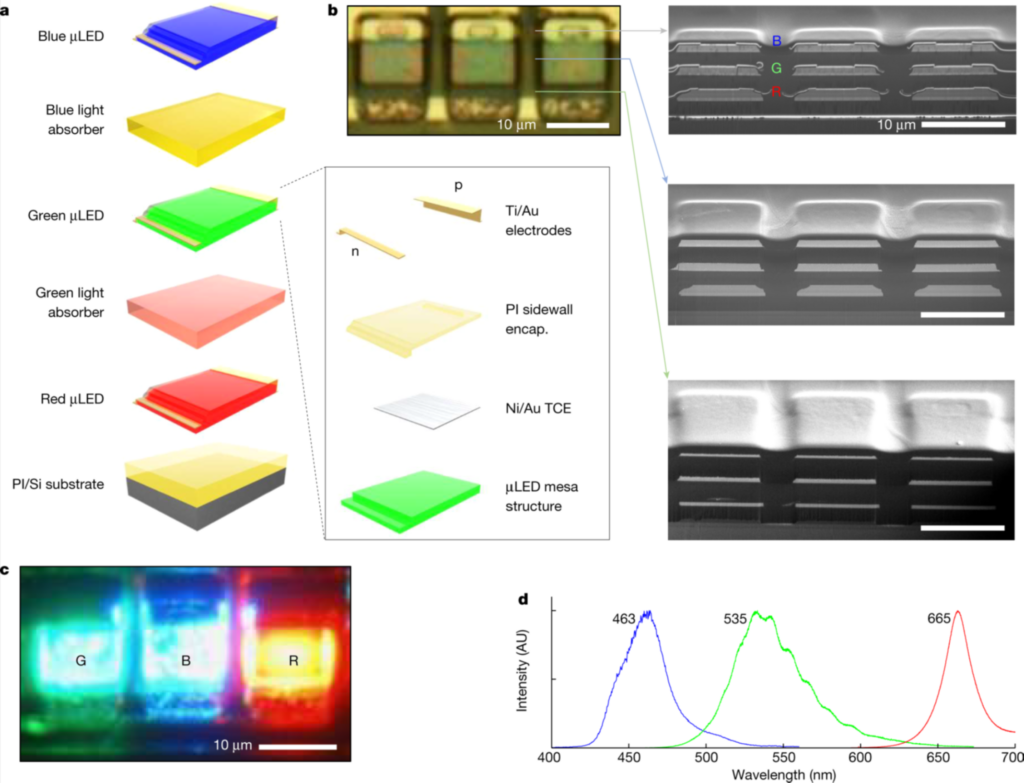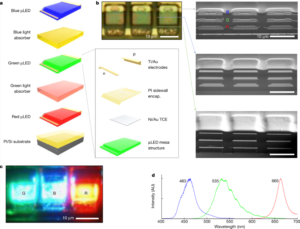A team of 34 researchers from the US and South Korea and headed by Jiho Shin of the Massachusetts Institute of Technology (Cambridge, MA) are developing means to fabricate vertically stacked arrays of microLEDs.
Augmented, virtual and mixed reality headsets require a full color display that has an extremely high pixel density and an extremely small physical size. MicroLEDs have the potential to meet these requirements. Unfortunately, it has been difficult to realize this potential using conventional microLED display fabrication technology. This is due, in part, to the fact that in a conventional array the red, green and blue microLEDs are arranged in a side by side pattern. One means to address this problem is by stacking freestanding red, green and blue LED membranes and fabricating from the top down. Perfecting this technology was the focus of the research undertaken by the team.
Details of the approach investigated by the researchers were reported in a recent article by the team. It is entitled “Vertical full-colour micro-LEDs via 2D materials-based layer transfer.” In this article, the approach developed by the team is described as a “two dimensional materials-based layer transfer technique that allows the growth of red, green and blue LEDs of near submicron thickness on two dimensional material coated substrates via remote or Van der Waals epitaxy, mechanical release and stacking of LEDs followed by top down fabrication.”
More specifically, to produce red AlGaAs-based LEDs, the researchers used graphene, coated on a GaAs wafer. To produce InGaN-based green and blue LEDs, the researchers used hBN on sapphire wafers. (hBN stands for hexagonal boron nitride.) The graphene red LEDs were transferred using remote epitaxy, while the hBN blue and green LEDs were removed using Van der Waals epitaxy. The researchers also demonstrated vertical integration of blue microLEDs with silicon membrane transistors for active matrix operation.
The result: full color, vertically stacked microLEDs with an array density of 5,100 pixels per inch, a size of 4 microns and a stack height of around 9 microns. The researchers state that, to their knowledge, these dimensions collectively represent the highest density, the smallest size and the smallest stack height of microLEDs ever reported.
The figure below illustrates the components, appearance and emission spectra of a stacked microLED device.

The researchers conclude their article with a statement to the effect that these results establish routes to creating full color microLED displays for augmented and virtual reality, while also offering a generalizable platform for broader classes of three dimensional integrated devices.

